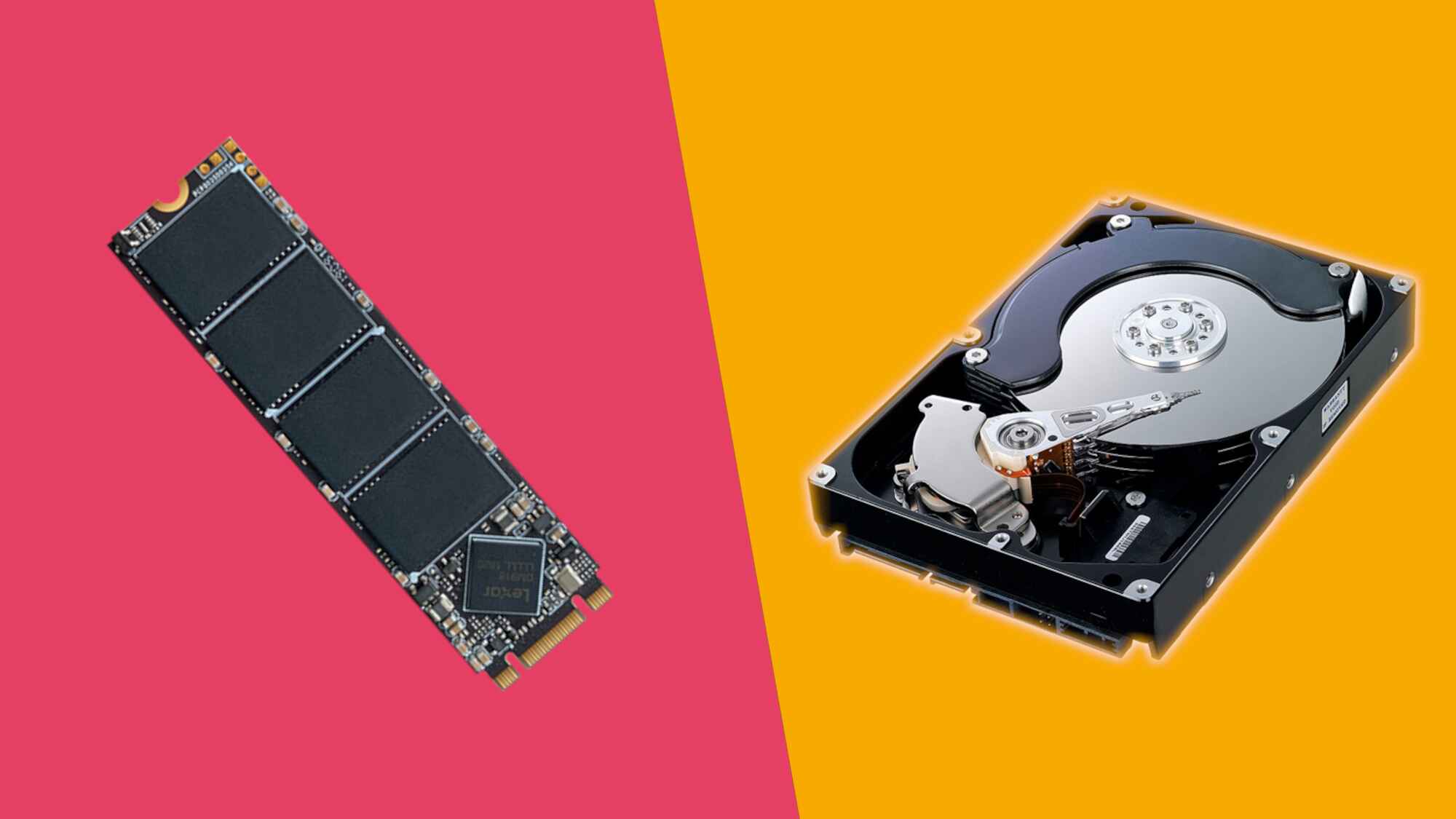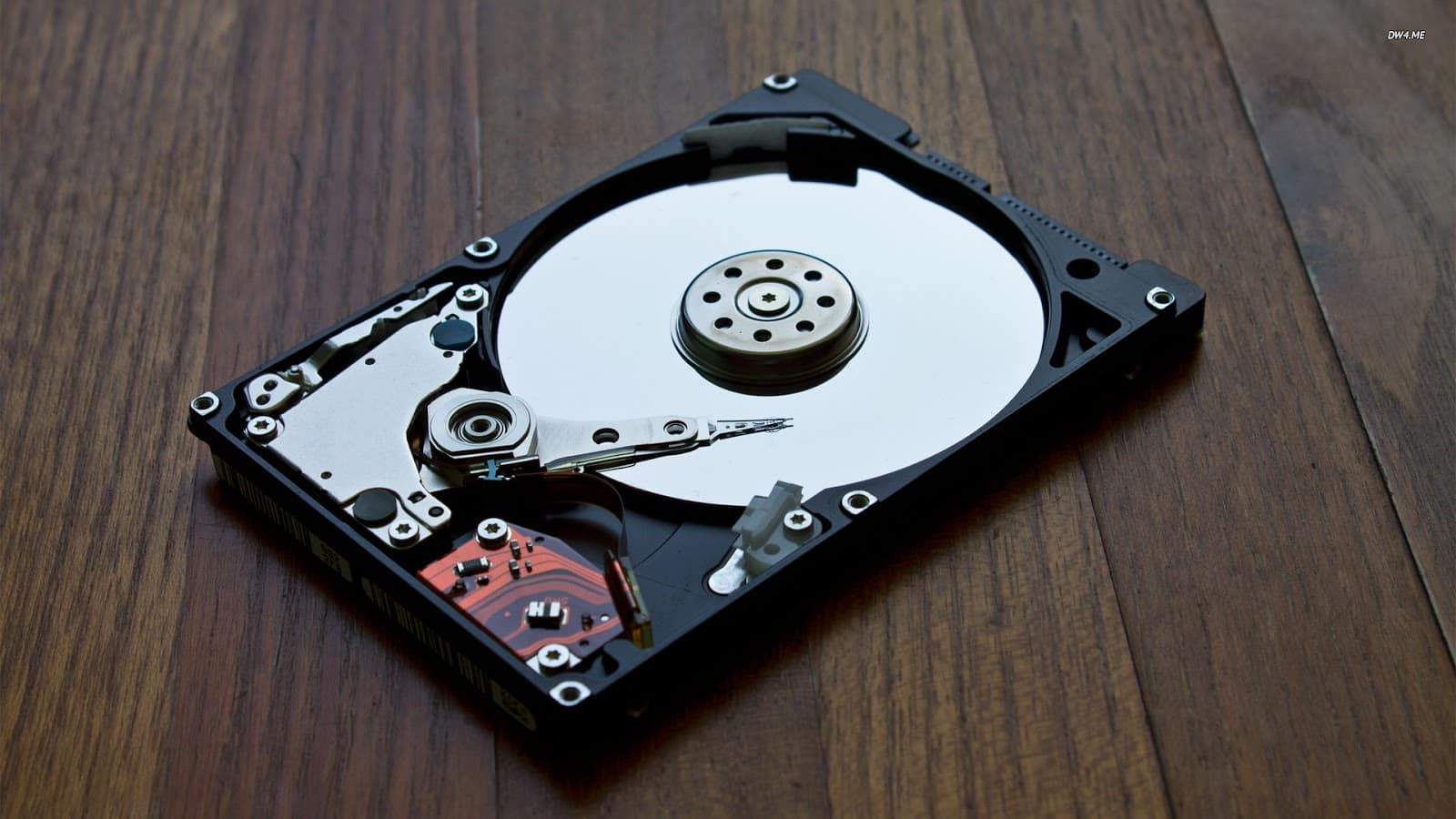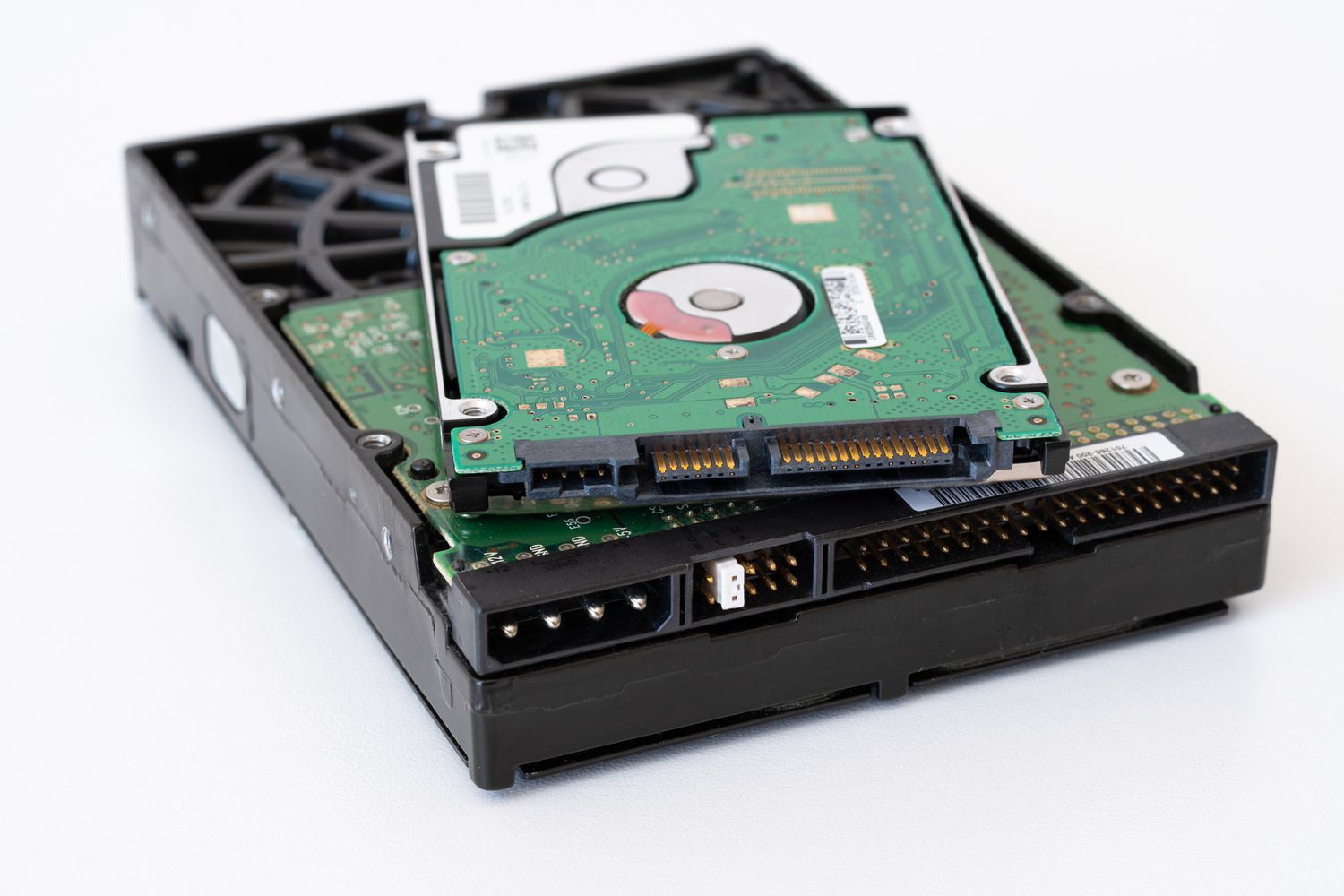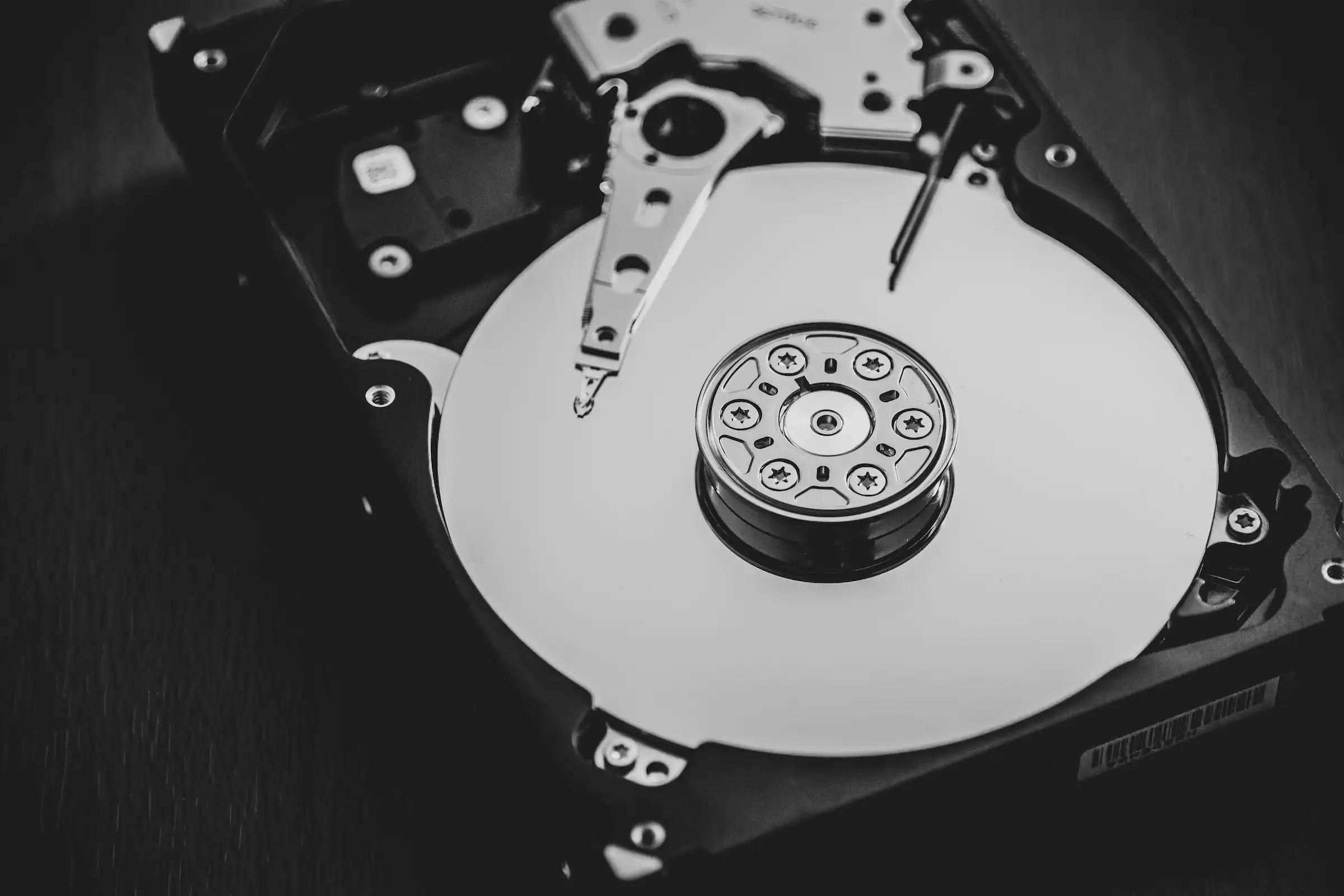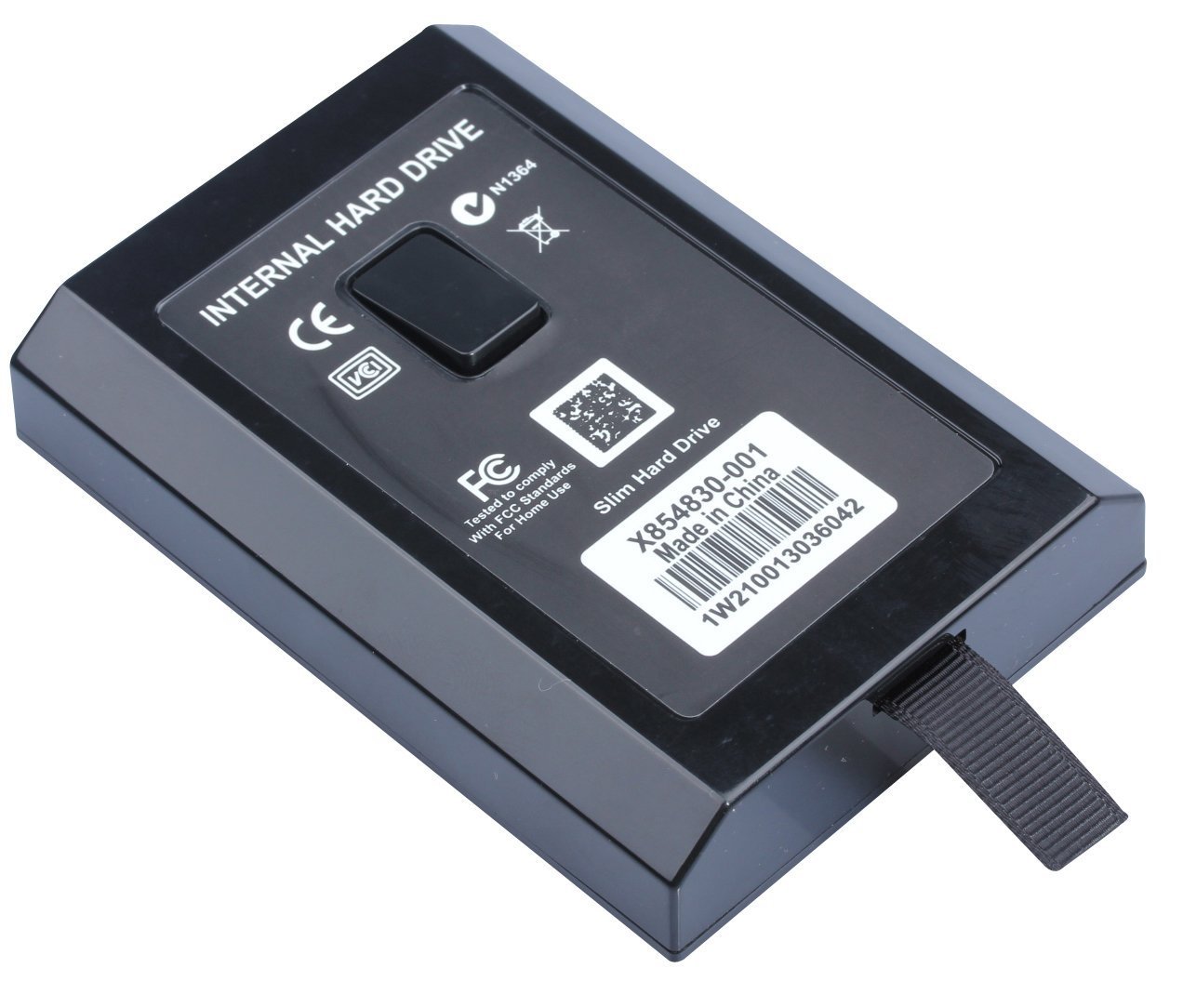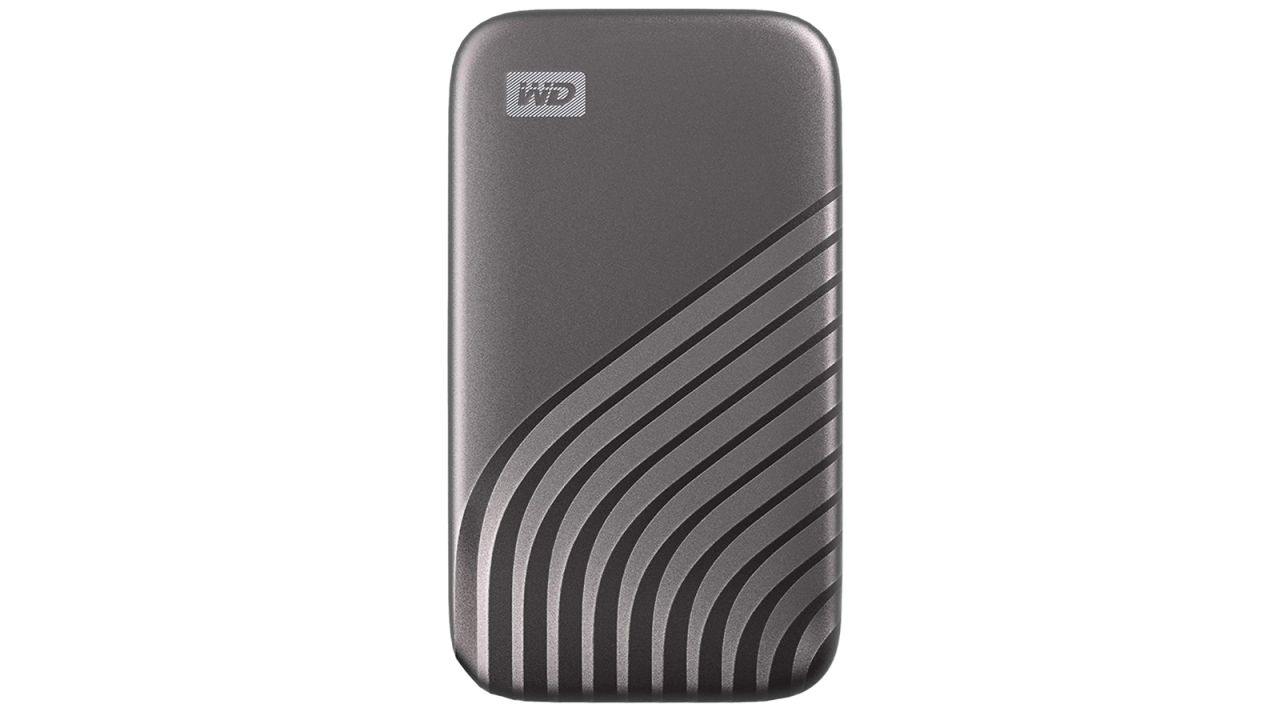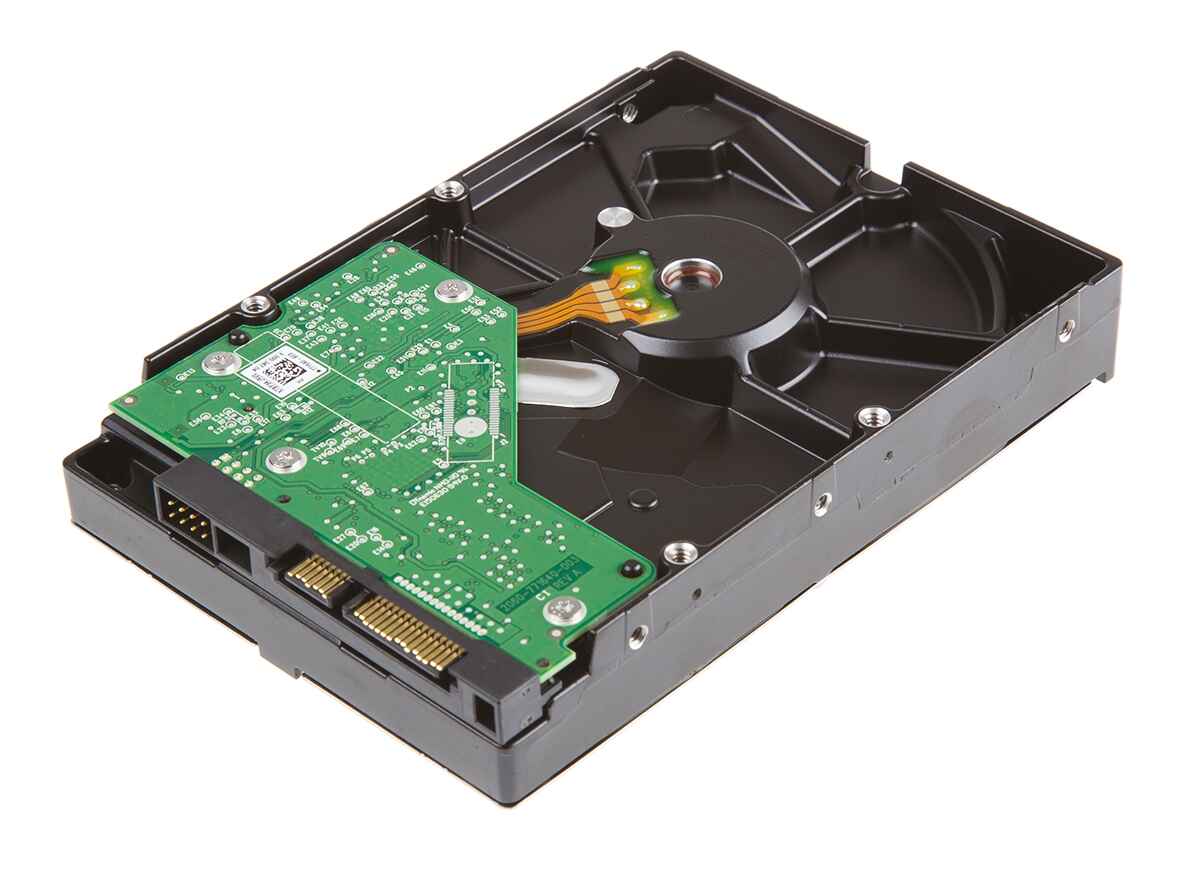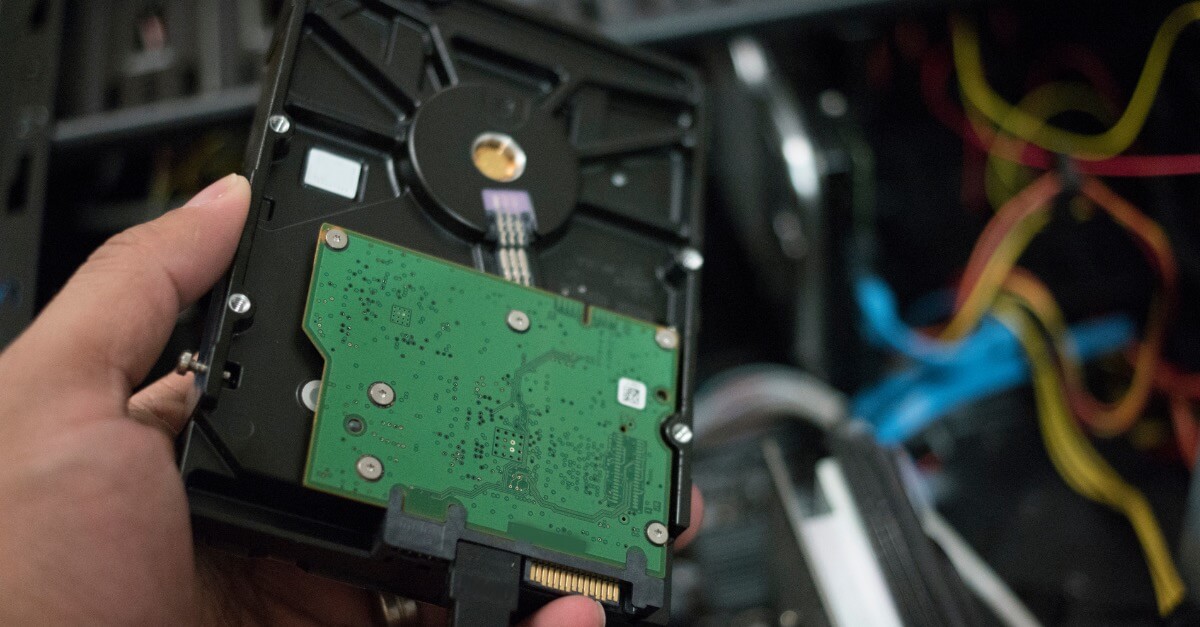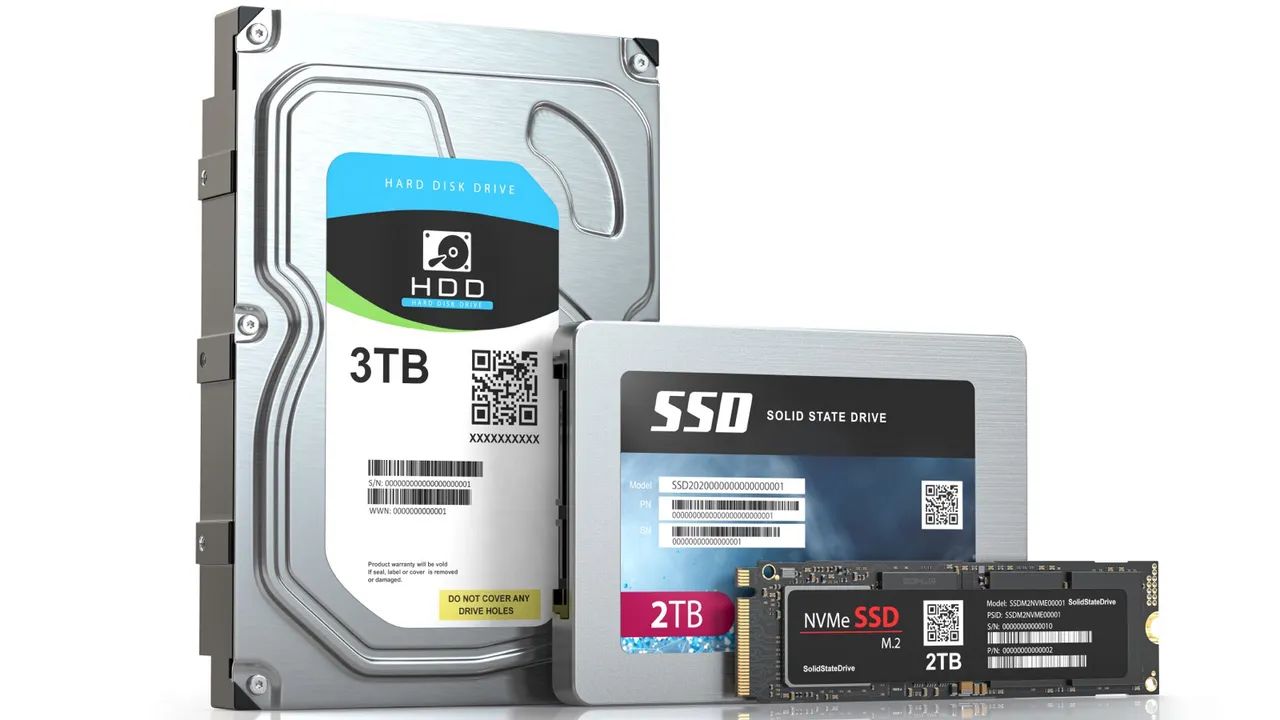Introduction
A hard disk drive (HDD) is an essential component of modern computer systems, providing a large and reliable storage solution for both personal and professional use. Whether you are a casual computer user or a professional handling massive amounts of data, understanding the functionality and capabilities of a hard disk drive is crucial in order to make informed decisions about storage options.
In this article, we will explore the concept of a hard disk drive, how it works, its components, and the different types available in the market. We will also discuss the advantages and disadvantages of using a hard disk drive, as well as its common uses and a comparison with solid-state drives (SSD). Lastly, we will provide some tips on how to choose the right hard disk drive for your specific needs.
As technology continues to advance, new storage options like solid-state drives (SSD) and cloud storage have gained popularity. However, hard disk drives still remain a reliable and cost-effective choice for many users, offering generous storage capacity and efficient data access. By understanding the functionality and benefits of a hard disk drive, you can make informed decisions about your storage needs and ensure that your data is safe and easily accessible.
Definition of a Hard Disk Drive (HDD)
A hard disk drive (HDD) is a data storage device that uses magnetic storage to store and retrieve digital information. It is commonly found in computers, laptops, and servers, providing a non-volatile storage solution for a wide range of data, including documents, photos, videos, applications, and operating systems.
The primary function of an HDD is to store and retrieve data quickly and efficiently. The term “hard disk” refers to the rigid disks, or platters, that are coated with a magnetic material on which the data is written. The “drive” refers to the mechanical apparatus that spins the disks and moves the read/write heads over them.
Inside an HDD, the data is stored in concentric circles called tracks, which are further divided into smaller sectors. The read/write heads, which are mounted on an actuator arm, move rapidly across the spinning disks to read and write data. When data is written, the magnetic material on the platters is polarized, representing the 0s and 1s of binary code. To read the data, the read/write heads detect the magnetic field changes and convert them into electronic signals that can be processed by the computer.
Hard disk drives are available in various capacities, typically ranging from gigabytes (GB) to terabytes (TB) and even petabytes (PB) for enterprise-level drives. The capacity of an HDD determines how much data it can store, with larger capacities allowing for the storage of more files and programs.
Overall, the HDD is an essential component of a computer system, providing a cost-effective and reliable means of data storage. Its ability to store and retrieve vast amounts of data quickly and efficiently makes it an indispensable tool for both personal and professional use.
How Does a Hard Disk Drive Work?
Understanding how a hard disk drive (HDD) works is crucial to appreciate its design and functionality. The primary components of an HDD include the platters, read/write heads, actuator arm, motor, and controller.
When the computer sends a request to access data stored on the hard disk drive, the controller receives the command and instructs the actuator arm to move the read/write heads to the correct location on the spinning platters. The read/write heads then sense the magnetic field changes on the platters and convert them into electrical signals for the computer to process.
The platters, which are coated with a magnetic material, are the storage medium of the HDD. They are mounted on a spindle that revolves at a high speed, typically ranging from 5,400 to 10,000 revolutions per minute (RPM). Each platter is divided into concentric tracks, and these tracks are further divided into sectors.
As the platters spin, the read/write heads, which are positioned above and below each platter, move closely along the tracks. The heads are attached to the actuator arm, which pivots on an axis. The actuator arm moves the heads from the outer edge of the platters to the inner edge and vice versa, allowing data to be read from or written to different areas of the platters.
When data is written to the HDD, the read/write heads generate a magnetic field that polarizes the magnetic material on the platters. These polarized areas represent the binary data, with one orientation representing a “0” and the opposite orientation representing a “1.” This process is known as magnetic recording. To read the data, the read/write heads sense the magnetic field changes as they pass over the platters, converting them into electrical signals that are then interpreted by the computer.
The motor is responsible for spinning the platters at a consistent speed, ensuring that the read/write heads can accurately read and write data. The controller manages the overall operation of the HDD, including controlling the movement of the actuator arm, processing data requests, and maintaining the integrity of the stored data.
In essence, the hard disk drive works by utilizing magnetic recording to store and retrieve data. It is an intricate system of moving parts and precise mechanisms that enable efficient data access and storage.
Basic Components of a Hard Disk Drive
A hard disk drive (HDD) comprises several essential components that work together to store and retrieve data efficiently. Understanding these components is crucial in comprehending the functionality of the HDD. The main components of an HDD include platters, read/write heads, actuator arm, motor, and controller.
The platters, also known as disks, are the primary storage medium of an HDD. These circular, rigid plates are coated with a magnetic material that allows data to be written and read. Each platter consists of multiple layers, typically made of glass or aluminum, and is polished to provide an extremely smooth surface for the read/write heads to move across.
The read/write heads are responsible for reading data from and writing data to the platters. These microscopic components are mounted on a slider and positioned slightly above the platters’ surfaces. When accessing data, the heads move back and forth across the platters, precisely aligning with specific tracks and sectors to read or write data by creating or detecting changes in the magnetic fields.
The actuator arm, also known as the actuator assembly, is a mechanical component that holds the read/write heads and positions them over the appropriate locations on the platters. It consists of a pivot point and an arm that moves the heads across the platters. The arm and heads move together as a unit to ensure accurate reading and writing of data on the desired track of the platters.
To spin the platters at a high speed, an HDD relies on a motor. The spindle motor rotates the platters at a consistent speed, typically measured in revolutions per minute (RPM). This controlled spinning is essential for reliable data access and prevents any unwanted vibrations that could affect the performance and durability of the HDD.
The controller is the brain of the HDD. It manages and coordinates the various operations within the drive. The controller is responsible for receiving and processing commands from the computer, interpreting and executing those commands, and controlling the movement of the actuator arm. Additionally, the controller performs error correction, manages data transfer rates, and handles wear-leveling techniques to ensure optimal performance and reliability of the hard disk drive.
These basic components work together seamlessly to provide a reliable and efficient data storage solution. The platters store the data magnetically, the read/write heads access the data, the actuator arm moves the heads accurately, the motor spins the platters, and the controller manages the overall operation of the HDD.
Types of Hard Disk Drives
Hard disk drives (HDDs) are available in various types to cater to different storage needs and device compatibility. While the underlying principles and functionalities remain the same, there are distinct variations in terms of form factor, interface, and performance. Common types of hard disk drives include:
1. 3.5-inch HDD: This type of HDD is commonly used in desktop computers and network-attached storage (NAS) systems. With a larger form factor, 3.5-inch HDDs offer higher storage capacities and generally operate at faster speeds than their smaller counterparts. They are ideal for applications that require a large amount of data storage, such as multimedia editing, gaming, and server hosting.
2. 2.5-inch HDD: 2.5-inch HDDs are mainly used in laptops, portable external drives, and gaming consoles. Their compact size makes them suitable for devices with limited space. While 2.5-inch HDDs generally have lower storage capacities than 3.5-inch HDDs, they consume less power and produce less heat, making them more energy-efficient and suitable for mobile devices.
3. Enterprise HDD: Enterprise HDDs are specifically designed for enterprise-level storage systems that require high reliability, performance, and data integrity. These drives are built with advanced features like better error correction capabilities, vibration resistance, and higher spindle speeds to provide consistent and uninterrupted operation in demanding server environments.
4. Surveillance HDD: Surveillance HDDs are optimized for surveillance systems, offering features like enhanced reliability, continuous recording capabilities, and high data transfer rates. These drives are designed to handle the rigorous workload associated with surveillance applications, including 24/7 recording and playback.
5. Solid-State Hybrid Drives (SSHD): SSHDs are a hybrid storage solution that combines the benefits of both HDDs and solid-state drives (SSDs). They feature a traditional HDD with a small amount of built-in flash memory. The flash memory serves as a cache and holds frequently accessed data, allowing for faster read and write speeds compared to traditional HDDs. SSHDs are often used in devices that require a balance between performance and cost.
6. External HDD: External HDDs are portable devices that connect to a computer or other devices via USB, Thunderbolt, or other interfaces. These drives provide additional storage capacity and flexibility, allowing users to easily transfer or backup their data without the need to open their computers. External HDDs come in various sizes and offer a convenient and portable storage solution for personal and professional needs.
While SSDs have gained popularity due to their faster read and write speeds, HDDs continue to be a cost-effective and reliable choice for many users. Each type of HDD serves unique storage requirements and offers different capacities, speeds, and compatibility options, allowing users to choose the most suitable drive for their specific needs.
Advantages of Hard Disk Drives
Despite the surge in popularity of solid-state drives (SSDs), hard disk drives (HDDs) continue to have several advantages that make them a viable and cost-effective storage option for many users. Here are some of the key advantages of using HDDs:
1. Cost-Effective: HDDs are generally more affordable than SSDs, offering larger storage capacities for the same price. This makes them an attractive choice for users who require vast amounts of storage without breaking the bank.
2. High Capacity: HDDs can provide extensive storage space, with capacities ranging from several hundred gigabytes (GB) to multiple terabytes (TB). This makes them suitable for storing large multimedia files, databases, and archival data.
3. Wide Compatibility: HDDs have been in use for many years and are compatible with a wide range of systems and devices, including laptops, desktops, gaming consoles, and external drives. This versatility allows users to use HDDs across multiple platforms without compatibility concerns.
4. Longevity: HDDs are designed to last for an extended period of time, with an average lifespan of around 3-5 years. With proper care and maintenance, they can continue to operate reliably for even longer periods, making them a dependable storage solution.
5. Data Security: HDDs are known for their ability to securely store data, as they can be easily removed from devices and physically stored in a safe location. This can be particularly beneficial for users who require offline or offline backup solutions to protect their valuable data.
6. Sequential Read/Write Performance: HDDs excel in sequential read and write tasks, making them well-suited for large file transfers and continuous data streaming applications. This makes them ideal for tasks like video editing, content creation, and server-based operations.
7. Mature Technology: HDD technology has been refined over many years, making it a reliable and well-established storage solution. The mature technology ensures that HDDs undergo rigorous testing, resulting in a stable and proven product.
8. Scalability: HDDs allow for easy scalability, as users can add additional drives or upgrade to higher-capacity drives as their storage needs grow. This flexibility makes it convenient and cost-effective for users to expand their storage capacity over time.
While SSDs offer faster read and write speeds, HDDs still offer several advantages, including affordability, high capacity, wide compatibility, longevity, data security, sequential read/write performance, mature technology, and scalability. By considering their specific storage requirements and budget constraints, users can make an informed decision about whether HDDs are the right choice for their needs.
Disadvantages of Hard Disk Drives
While hard disk drives (HDDs) have been a popular storage option for many years, they do come with some disadvantages compared to solid-state drives (SSDs). Understanding these limitations can help users make informed decisions about their storage needs. Here are some of the key disadvantages of using HDDs:
1. Slower Speed: HDDs are slower in terms of data access and transfer speeds compared to SSDs. This is because HDDs rely on mechanical components and spinning platters, which inherently introduce latency and slower seek times. As a result, tasks such as booting up the system, launching applications, and accessing data may take longer with an HDD.
2. Mechanical Failure: Being comprised of moving parts, HDDs are susceptible to mechanical failure. The spinning platters and read/write heads are delicate components that can be damaged due to physical shock or wear and tear over time. Mechanical failure can result in data loss and the need for costly data recovery services.
3. Vulnerability to Environmental Factors: HDDs are sensitive to environmental conditions such as temperature and humidity. Exposure to extreme temperatures, humidity, or even dust and moisture can affect the performance and reliability of an HDD. Therefore, proper environmental conditions and regular maintenance are crucial to ensure the longevity of an HDD.
4. Power Consumption: Compared to SSDs, HDDs consume more power due to the mechanical components involved in their operation. This increased power consumption can have a minor impact on battery life for portable devices and contribute to higher energy costs for desktop systems.
5. Noise and Vibrations: HDDs produce noise and vibrations during operation due to the spinning platters and moving read/write heads. While modern HDDs are designed to mitigate these factors, they can still be noticeable, especially in quiet environments and with older or poorly maintained drives.
6. Limited Durability: Due to their mechanical nature, HDDs have a limited lifespan compared to SSDs. Over time, the mechanical components are subject to wear and tear, which can eventually lead to the failure of the drive. This makes HDDs less suitable for applications requiring long-term storage or continuous, intensive usage.
7. Bulkier Form Factor: HDDs have a larger physical form factor compared to SSDs, making them less suitable for devices with limited space, such as ultrabooks, tablets, and compact PCs. The larger size of HDDs can make them less portable and limit their compatibility with smaller devices.
While HDDs have these drawbacks, they still offer benefits such as cost-effectiveness, high storage capacity, and compatibility. By considering the specific needs, budget, and usage patterns, users can determine whether the advantages of HDDs outweigh the disadvantages or if an alternative storage option such as SSDs would be more suitable.
Common Uses of Hard Disk Drives
Hard disk drives (HDDs) are widely used in various applications for both personal and professional purposes. The large storage capacity and cost-effectiveness of HDDs make them a popular choice for many users. Here are some common uses of hard disk drives:
1. Personal Computers: HDDs are commonly used as the primary storage device in desktop computers and laptops. They provide ample space to store operating systems, software applications, multimedia files, documents, and personal data.
2. External Storage: Many users utilize external HDDs to expand the storage capacity of their desktops, laptops, or gaming consoles. External HDDs offer high capacity and portability, making them an ideal solution for backing up data, transferring files, and storing multimedia content.
3. Media Storage and Streaming: HDDs are essential for media storage and streaming applications. They can store large collections of movies, music, and other media files, allowing users to access and stream content on media servers, smart TVs, gaming consoles, and media players.
4. Digital Content Creation: Professionals working in creative fields such as photography, videography, and graphic design often rely on HDDs to store their high-resolution media files. The large capacities and sequential read/write performance of HDDs make them suitable for managing and editing large files.
5. Network-Attached Storage (NAS): NAS systems utilize multiple HDDs to create a centralized storage solution for homes or small businesses. HDDs in NAS setups provide a cost-effective way to store and share data across multiple devices and enable features like data redundancy and remote accessibility.
6. Enterprise Storage Systems: Enterprises and organizations rely on HDDs for critical data storage, including database management, file servers, and backup systems. Enterprise-grade HDDs offer higher performance, better reliability, and advanced features tailored to meet the demands of data-intensive applications.
7. Surveillance Systems: HDDs are widely used in surveillance systems for video storage and playback. The high capacity, durability, and continuous recording capabilities of HDDs make them suitable for storing video footage from security cameras, allowing for retrieval and analysis when needed.
8. Gaming: HDDs are commonly used for storing game installations, updates, and saved game files on gaming consoles and PCs. The large storage capacities of HDDs enable gamers to store a vast library of games and access them quickly.
These are just a few examples of how HDDs are used in various applications. Their versatility, affordability, and reliable performance continue to make them a popular storage choice for a wide range of personal, professional, and industrial uses.
Comparison with Solid State Drives (SSD)
When discussing storage options, it is important to compare hard disk drives (HDDs) with solid-state drives (SSDs). SSDs have gained popularity due to their faster performance and durability compared to HDDs. Here are some key points of comparison between HDDs and SSDs:
1. Speed: One of the major advantages of SSDs over HDDs is their significantly faster speed. SSDs use flash memory to store data, which allows for near-instantaneous data access and faster read/write speeds. This results in quicker boot times, faster file transfers, and smoother application loading compared to HDDs.
2. Durability: SSDs have no moving parts, whereas HDDs consist of spinning platters and read/write heads. As a result, SSDs are more resistant to shock, vibration, and physical damage. This makes SSDs a more reliable choice, especially in portable devices or environments prone to movement.
3. Power Efficiency: SSDs consume less power than HDDs. Without the need for mechanical movements, SSDs require less energy, which can extend battery life in laptops, reduce power consumption in desktops, and contribute to lower energy costs in data centers or server environments.
4. Noise and Heat: Since SSDs have no moving parts, they generate minimal noise and heat compared to HDDs. HDDs can produce noticeable noise and vibrations due to the spinning platters and moving components. SSDs are virtually silent and operate at lower temperatures, contributing to a quieter and cooler computing experience.
5. Storage Capacity: HDDs generally offer larger storage capacities than SSDs at a lower cost per gigabyte. This makes HDDs more suitable for users requiring vast amounts of storage, such as professionals working with large media files, video editors, or data centers that store massive amounts of information.
6. Price: SSDs are typically more expensive than HDDs in terms of cost per gigabyte. While SSD prices have decreased over the years, the price difference remains a consideration, especially when it comes to storage requirements for budget-conscious consumers or businesses with extensive data storage needs.
7. Lifespan: SSDs have a limited number of write cycles before the cells can degrade over time. However, modern SSDs have advanced wear-leveling algorithms that distribute data evenly across the storage cells, increasing their lifespan. While HDDs have a longer average lifespan, they are more prone to mechanical failure due to the moving parts.
Ultimately, the choice between an HDD and an SSD depends on individual needs and preferences. SSDs provide faster performance, durability, and power efficiency, making them ideal for users who prioritize speed and reliability. HDDs, on the other hand, offer larger storage capacities at a lower cost, making them a viable option for users who require extensive storage space and are conscious of budget considerations.
Choosing the Right Hard Disk Drive for Your Needs
When selecting a hard disk drive (HDD), it is important to consider your specific requirements, such as storage capacity, performance, durability, and cost. Here are some factors to keep in mind when choosing the right HDD for your needs:
1. Storage Capacity: Determine how much storage space you require for your data. Consider the types of files you need to store, such as documents, photos, videos, or applications, and estimate the total size of your data. Choose an HDD with a capacity that accommodates your current needs while leaving room for future growth.
2. Performance Needs: Assess your performance requirements based on the intended use of the HDD. If you primarily work with large files or perform tasks like video editing or gaming, consider an HDD with faster rotational speed (RPM) and higher data transfer rates for improved performance.
3. Reliability and Longevity: Consider the reliability of the HDD. Research the manufacturer’s reputation for producing durable and long-lasting drives. Read reviews and consider factors such as the average lifespan and failure rates of the HDDs you are considering. Choose an HDD that offers a balance between performance and reliability.
4. Compatibility: Ensure that the HDD you choose is compatible with your system or device. Check the interface of the HDD (e.g., SATA, IDE, NVMe) and verify that it is supported by your computer or storage device. Pay attention to factors like physical size (3.5-inch or 2.5-inch) for compatibility with your computer’s or enclosure’s drive bay.
5. Budget: Set a budget for your HDD purchase. Consider the price per gigabyte and compare it to your storage needs. Keep in mind that SSDs are generally more expensive per gigabyte than HDDs, so determine whether the advantages of an SSD outweigh the budget constraints.
6. Noise and Heat: If noise and heat are significant concerns in your computing environment, consider the impact of HDDs with spinning platters and moving parts. Alternatively, SSDs produce no noise and generate less heat, making them suitable for noise-sensitive or compact systems.
7. Backup and Data Protection: Consider your backup and data protection strategies. If data security and redundancy are crucial, consider using multiple HDDs in a RAID configuration or investing in a separate backup solution to ensure the safety of your important files.
8. Warranty and Support: Check the warranty and support options provided by the HDD manufacturer. A longer warranty period indicates the manufacturer’s confidence in their product. Additionally, ensure that the manufacturer offers reliable customer support for any assistance or troubleshooting needs.
By considering these factors, you can find the right HDD that meets your storage requirements, performance expectations, budget, and other specific needs. Remember to conduct thorough research, read product reviews, and compare different HDD options to make an informed decision.
Conclusion
Hard disk drives (HDDs) continue to play a significant role in data storage, offering a cost-effective and reliable solution for various applications. Despite the increasing popularity of solid-state drives (SSDs), HDDs provide distinct advantages such as larger storage capacities, wider compatibility, and affordable pricing per gigabyte.
HDDs are commonly used in personal computers, external storage devices, media servers, network-attached storage (NAS) systems, and enterprise storage solutions. They are crucial for handling tasks like media storage, digital content creation, data backup, and surveillance systems. HDDs offer a dependable storage solution, particularly for users who require extensive storage space or have budget limitations.
However, it’s important to consider the limitations of HDDs, including their slower speed, mechanical components prone to failure, vulnerability to environmental factors, and higher power consumption compared to SSDs. For users who prioritize speed, durability, and energy efficiency, SSDs may be a more suitable option.
When choosing an HDD, factors such as storage capacity, performance needs, reliability, compatibility, budget, and backup strategies should be considered. By carefully evaluating your requirements and comparing different HDD options, you can find the right balance between storage capacity, performance, and cost-effectiveness.
Ultimately, the choice between an HDD and an SSD depends on individual needs, budget constraints, and the specific use case. HDDs provide a viable storage solution for many users, offering ample storage space, compatibility with various devices, and a cost-effective option for data storage.
As technology continues to evolve, both HDDs and SSDs will continue to coexist, catering to different storage needs and preferences. Understanding the advantages and disadvantages of HDDs is essential in making informed decisions about storage solutions, ensuring that your data is safely stored and easily accessible for years to come.







